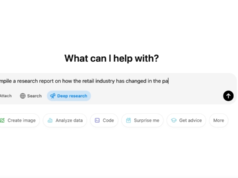![]()
Blogging photo pirates of the world may move into the realm of legitimacy. That’s because Getty Images has decided to give away its photos for non-commercial usage. Yes, give them away. As in free. Instead of forking out dough for long legal battles, the picture service is joining the free photo fray. The difference is Getty serves up some of the highest-quality photos available anywhere.
Of course, there is a bit of a catch. Although Getty is making the images available for non-commercial use at no cost, designers, bloggers, social media gurus and others that rely on the stock have to use an embed tool as part of the deal.
Essentially, that means you’ll click on an image’s embed icon from the search results or image details page, copy the embed code, and then past the HTML code you copied into the source code of the Web site or blog where you want the image to appear. Then, voila, you can publish and share the image.
Innovation and Disruption
In Getty’s own words, people are increasingly turning to imagery to communicate and tell their stories online. With Getty’s shift toward providing free images, bloggers and others now have access to news, sports, celebrity, and fashion images, among others. This is a major breakthrough in the field of digital imagery, considering the size and quality of Getty’s photo library.
“imagery has become the world’s most spoken language. Whether via a blog, Web site or social media, everyone is a publisher and increasingly visually literate,” said Jonathan Klein, co-founder and CEO of Getty Images.
“Innovation and disruption are the foundation of Getty Images, and we are excited to open up our vast and growing image collection for easy, legal sharing in a new way that benefits our content contributors and partners.”
Getty’s Upside
So what’s the payoff for Getty? The image service isn’t asking much, really. You have to include a photographer attribution, of course, and when people click the photo it will take them to www.gettyimages.com where the image can be licensed for commercial use.
“You have to adapt to survive,” said Kevin Mazur, celebrity photographer and director, and co-founder of WireImage Inc., a division of Getty Images, Inc. Mazur is quoted in the Getty announcement, saying “responsible image sharing is the way forward for the industry.”
Yes, it’s a way forward — and a realistic one, Rob Enderle, a principal analyst at The Enderle Group, told us. As he sees it, Getty is looking to avoid massive legal fees associated with going after copyright infringers one by one without any guarantee of success in court.
Redeeming Value
“If you are dealing with some teen blogger, the court may not decide in your favor and if you keep raking up legal fees and don’t get squat, you can use up all your profits,” Enderle said. “They are just being realistic.”
It may be the old “if you can’t beat ‘em, join ‘em” strategy with a twist. There is some redeeming value for Getty, at least potentially. By opening up its archives for free, content creators will be more likely to use Getty images instead of some lower quality freebies available from stock photo sites.
If linked photos then get the attention of commercial publications, ad agencies, marketing departments, or others who would pay for commercial use, Getty could earn additional revenue and actually see a boost in sales.
“I think Getty recognizes individual bloggers weren’t going to pay for those images anyway,” Enderle said. “So they might as well get the publicity associated with their images being distributed as opposed to not getting anything.”
NewsFactor Network






